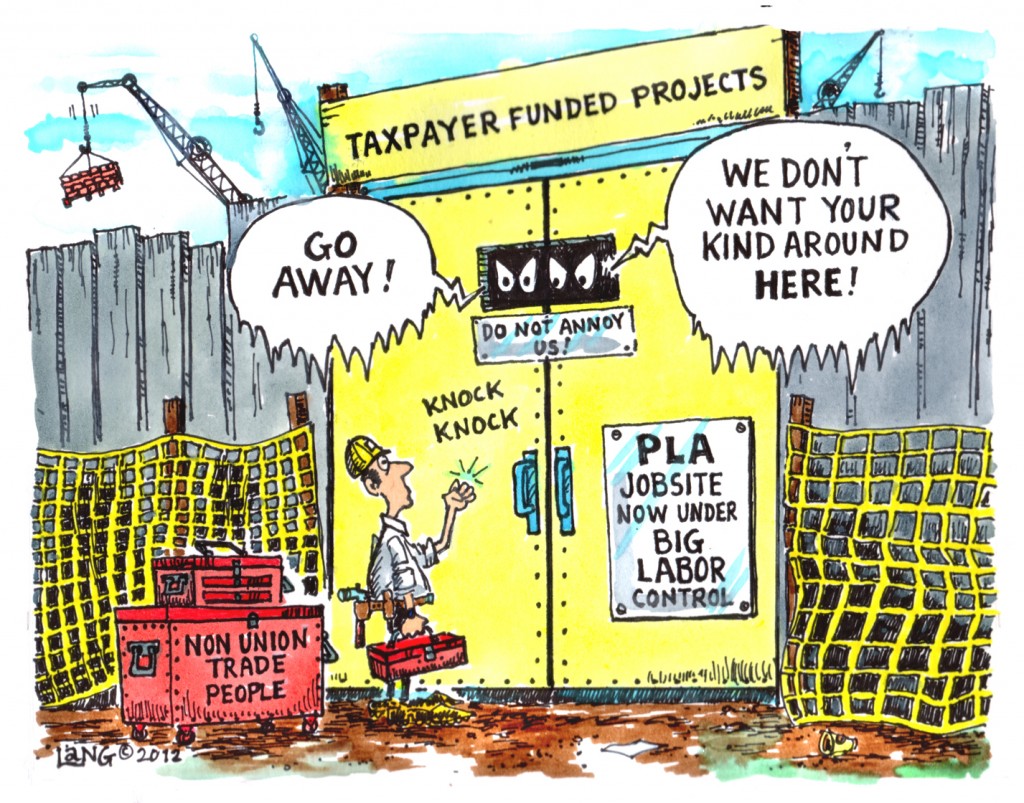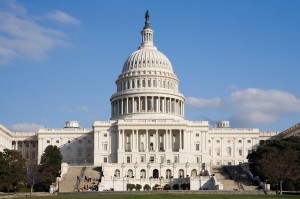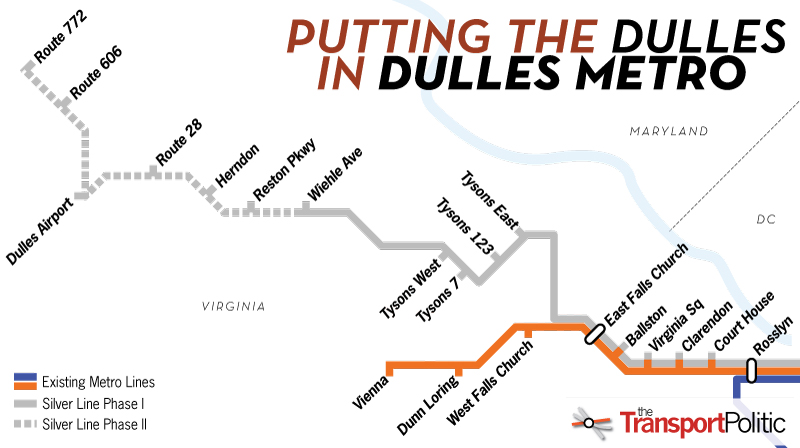The Top 10 Stories of 2012
Happy New Year from TheTruthAboutPLAs.com
In 2012, construction industry advocates of fair and open competition in public contracting defied a difficult political environment and economy to create more opportunities for qualified merit shop contractors and their skilled employees.
President Obama’s Feb. 6, 2009, Executive Order 13502 encouraging federal agencies to mandate project labor agreements (PLAs) on federal construction projects exceeding $25 million in total cost opened the door to billions of dollars worth of federal construction contracts being steered primarily to unionized contractors and their all-union workforces. This came at the expense of taxpayers and the experienced men and women employed by merit shop contractors who deliver projects safely, on time and on budget every day.
In response, Associated Builders and Contractors (ABC), TheTruthAboutPLAs.com, and proponents of fair and open competition mobilized an aggressive campaign of effective legislative, legal and public relations strategies to restrict the devastating impact of anti-competitive and costly government-mandated PLAs on federal, state and local public works projects. The campaign is producing impressive results.
Following are TheTruthAboutPLAs.com’s “Top 10 Stories of 2012,” which provide some highlights (and lowlights) of last year’s fight against government-mandated PLAs. We look forward to continuing to advocate for fair and open competition in 2013 and beyond.
10. GSA’s PLA Policy Waste > GSA Scandal Waste: Where’s the Outrage?
The U.S. General Services Administration (GSA) scandal regarding a 2012 Inspector General’s report uncovering more than $800,000 in fraud and waste at a 2010 regional Spring Break conference for GSA employees in Las Vegas led to congressional hearings, requisite termination of senior GSA officials, slashed agency budgets, and weak accountability by the Obama administration. However, the media failed to make an important connection between equally outrageous waste regarding the GSA’s pro-PLA policy.
On April 10, TheTruthAboutPLA.com broke the story that this waste paled in comparison (approximately 400 percent less) to the whopping $3.3 million the GSA flushed down the toilet due to a PLA mandate on just one federal construction project: the Lafayette Building in Washington, D.C. This story eventually was picked up and presented to a national audience by Michelle Malkin and other pundits who highlighted the absurdity of lawmakers’ and the media overlooking the real GSA scandal: taxpayer dollars wasted on union favoritism due to a needless PLA preference policy encouraged by President Obama’s pro-PLA Executive Order 13502.
9. Completing a PLA Survey a Day Keeps Competition in Play
In 2012, TheTruthAboutPLAs.com helped the merit shop contracting community respond to more than 50 PLA surveys issued by federal agencies. With approximately $30 billion a year in federal construction spending power, these agencies request information about the potential use of PLA mandates on specific federal construction projects as a result of FAR regulations and federal agency policies stemming from President Obama’s pro-PLA Executive Order 13502.
The surveys, which sometimes include more than 20 complex questions, place paperwork burdens on federal contractors already mired in federal red tape and adds a time-consuming step in the procurement process for federal officials and the contracting community. Both groups pine for the less cumbersome procurement process in place from 2001 to 2009, when President Bush prohibited government-mandated PLAs on federal and federally assisted construction projects.
8. TheTruthAboutPLAs.com Gets a Facelift
After hundreds of posts since its April 2009 launch, TheTruthAboutPLAs.com underwent a well-deserved facelift in July. In addition to this new educational video, visitors can easily access studies and talking points against government-mandated PLAs while staying connected with the latest news and action alerts via blog posts and social media by “liking” our Facebook page and following our Twitter account.
7. NAVFAC Mandates First PLA on Navy Project During Obama Administration
Naval Facilities Engineering Command (NAVFAC) Northwest mandated the first PLA on a Navy project in early 2012. The PLA was mandated in Phase 2 of the bidding on a $500 million explosives handling wharf project at Naval Base Kitsap-Bangor in Washington in response to intense political pressure from powerful Washington, D.C., lawmakers beholden to construction trade unions and their anti-competitive agenda.
It was reported that NAVFAC mandated a PLA after Sens. Maria Cantwell and Patty Murray, and Reps. Norm Dicks and Jay Inslee (all Democrats from Washington) leaned heavily on the Navy in support of a PLA at the request of construction trade union lobbyists. National construction trade unions made at least $814,375 in PAC contributions to the quartet of Democrats who urged Navy officials to steer these contracts to unionized labor and contractors via the PLA mandate.

TheTruthAboutPLAs.com will be watching this project closely for the trademark problems associated with government-mandated PLAs.
6. Legal Tactics Derail U.S. Department of Labor PLA in New Hampshire—Twice
During President Obama’s first term, contractors filed five Government Accountability Office (GAO) bid protests against PLAs mandated by federal agencies on various large-scale federal construction projects. In each instance, federal agencies abandoned the PLA mandates after GAO officials suggested these schemes violate federal contracting laws in specific circumstances.
In October, contractors celebrated the latest GAO bid protest victory: a win against a U.S. Department of Labor (DOL) PLA mandate on a $30 million Job Corps Center in Manchester, N.H. It was the DOL’s second attempt to mandate a PLA on the project despite a similar bid protest filed in 2009.

The PLA removal was a victory for free enterprise and the Granite State’s taxpayers and contracting community.
An investigation by TheTruthAboutPLAs.com uncovered the DOL spent nearly $400,000 on studies conducted by union cronies justifying a PLA requirement on the Job Corps Center in New Hampshire, where just 14.4 percent of the construction workforce belongs to a union.
5. Federal Anti-PLA Mandate Legislation Receives Historic Number of Cosponsors and Broad Industry Support
In the 112th Congress, TheTruthAboutPLAs.com and its readers educated lawmakers about the impact of discriminatory PLA mandates and preferences, as well as promoted commonsense legislation restoring a level playing field in federal contracting. The Government Neutrality in Contracting Act (H.R. 735/S.119), which prohibits federal agencies from requiring or prohibiting contractors to execute PLAs as a condition of winning a federal construction contract, finished 2012 with a record 181 cosponsors in the House, 32 cosponsors in the Senate, and broad support from a diverse coalition of construction industry associations and employer groups opposed to government-mandated PLAs. House Oversight and Government Reform subcommittees have held multiple hearings exploring PLA mandates and H.R. 735.
In addition, the House voted five times—another important milestone—on amendments restricting PLA mandates on various bills funding and authorizing federal construction projects.
4. House Passes Historic Amendment Restricting Government-Mandated PLAs on Military Construction Projects; Language Removed in Conference
On May 17, 2012, by a bipartisan vote of 211 to 209, the House passed an amendment, offered by Rep. Roscoe Bartlett (R-Md.) and cosponsored by Rep. Jeff Flake (R-Ariz.), to the National Defense Authorization Act (NDAA) for Fiscal Year 2013 (H.R. 4310) that prohibits federal agencies from mandating PLAs and PLA preferences on federal construction contracts authorized by the NDAA. It marked the first time any chamber of Congress passed legislation restoring neutrality in government contracting, as previous votes in the 112th Congress failed by razor-thin margins. Unfortunately, the provision was removed during conference. However, this legislative progress may embolden the 113th Congress to enact similar commonsense solutions to ensure fair and open competition on federal construction projects.
3. Will Re-Election Result in a Rise in Federal PLAs During Obama’s Second Term?
Elections have consequences. While GOP nominee Gov. Mitt Romney pledged to repeal President Obama’s Executive Order 13502 and prohibit government-mandated PLAs on federal and federally assisted construction projects, the election of President Obama to a second term will mean more PLA mandates on federal and federally assisted projects. The question is: How bad will it be?
Through FY 2012, an estimated 708 federal contracts exceeding $25 million in total costs worth a total of $47.64 billion were subjected to President Obama’s Executive Order 13502. While government data is somewhat inadequate on this topic, we estimate less than 15 federal projects, worth an estimated $2 billion, were built with PLA mandates, PLA preferences or renewed PLAs on ongoing maintenance projects.
The merit shop contracting community proved resilient in the face of political and economic adversity, and industry members must continue this fight during President Obama’s second term.

Executive Order 13502: Obama’s Gift to Big Labor. Image courtesy of The Boston Globe, “Obama kowtows to labor unions,” 10/07/09.
As a payback to his construction trade union supporters, President Obama may enact Section 7 of Executive Order 13502. Lowering the current $25 million threshold, or expanding the order to apply to federally assisted projects, would expose a much larger portion of the construction industry to PLA threats. It would create more jobs for unionized contractors and union members while wasting scarce taxpayer dollars, reducing construction job creation and discriminating against 86 percent of the U.S. construction workforce (those who choose not to join a labor union). Expanding Section 7 of Executive Order 13502 would likely go through the FAR regulatory process and trigger an intense political and legislative backlash.
2. More States Pass Anti-PLA Measures
In 2012, Idaho, Kansas, Michigan, Oklahoma and Virginia enacted measures restricting government-mandated PLAs on state and state-assisted construction projects, bringing the total number of states to ensure fair and open competition in public contracting to 14. Michigan’s law was recently enjoined pending a legal decision from the 6th Circuit and should be resolved this year. States and localities passed these measures partially in response to President Obama’s Executive Order 13502 and the fear of Section 7 expansion onto state, local and private projects receiving federal assistance. Expect more states to enact similar measures in 2013.
1. Virginia’s Silver Line PLA Controversy Forces Reform and Grabs Headlines
TheTruthAboutPLAs.com exposed the Metropolitan Washington Airport Authority’s (MWAA) underhanded attempt to mandate a PLA on $2.8 billion Phase 2 Silver Line metro rail extension past Dulles Airport in Northern Virginia, leading to a series of media reports, investigations and drastic reforms at MWAA and in Virginia’s contracting laws.
The PLA mandate, pushed by MWAA board member and LiUNA Mid-Atlantic Vice President Denny Martire would have increased costs, reduced competition and harmed Virginia’s (overwhelmingly nonunion) construction workforce. The scheme was met with intense opposition by Virginia officials, taxpayers and businesses and led to a U.S. Department of Transportation (DOT) Office of Inspector General (OIG) investigation into the unethical behavior, wasteful spending and contracting irregularities of MWAA board members and staff.
After months of pressure, in February, MWAA replaced the PLA mandate with a controversial PLA preference, incentivizing contractors to use a PLA. This de facto PLA mandate was again met with intense opposition from project stakeholders.
In April, Gov. Bob McDonnell (R) signed the Fair and Open Competition in Government Contracting Act (HB 33) into law, prohibiting the Commonwealth of Virginia and recipients of state assistance from mandating PLAs and enacting PLA preferences discriminating against bidders unwilling to execute PLAs.
In June, MWAA was forced to abandon the Phase 2 PLA preference due to the passage of HB 33, combined with a similar budget amendment. In addition, Gov. McDonnell pushed MWAA to add additional Virginia representatives to the MWAA board and to oust Martire. Martire filed two lawsuits to stay on the board, costing MWAA more than $1.5 million dollars in legal fees, until Gov. McDonnell and Martire reached a settlement for Martire to resign in October.
In November, the DOT OIG’s final report uncovered vast corruption at MWAA, leading to intense media coverage and internal reforms, proving that anti-competitive and costly PLA schemes go hand in hand with poorly run authorities like MWAA. TheTruthAboutPLAs.com will be monitoring this project closely for any additional irregularities.
















